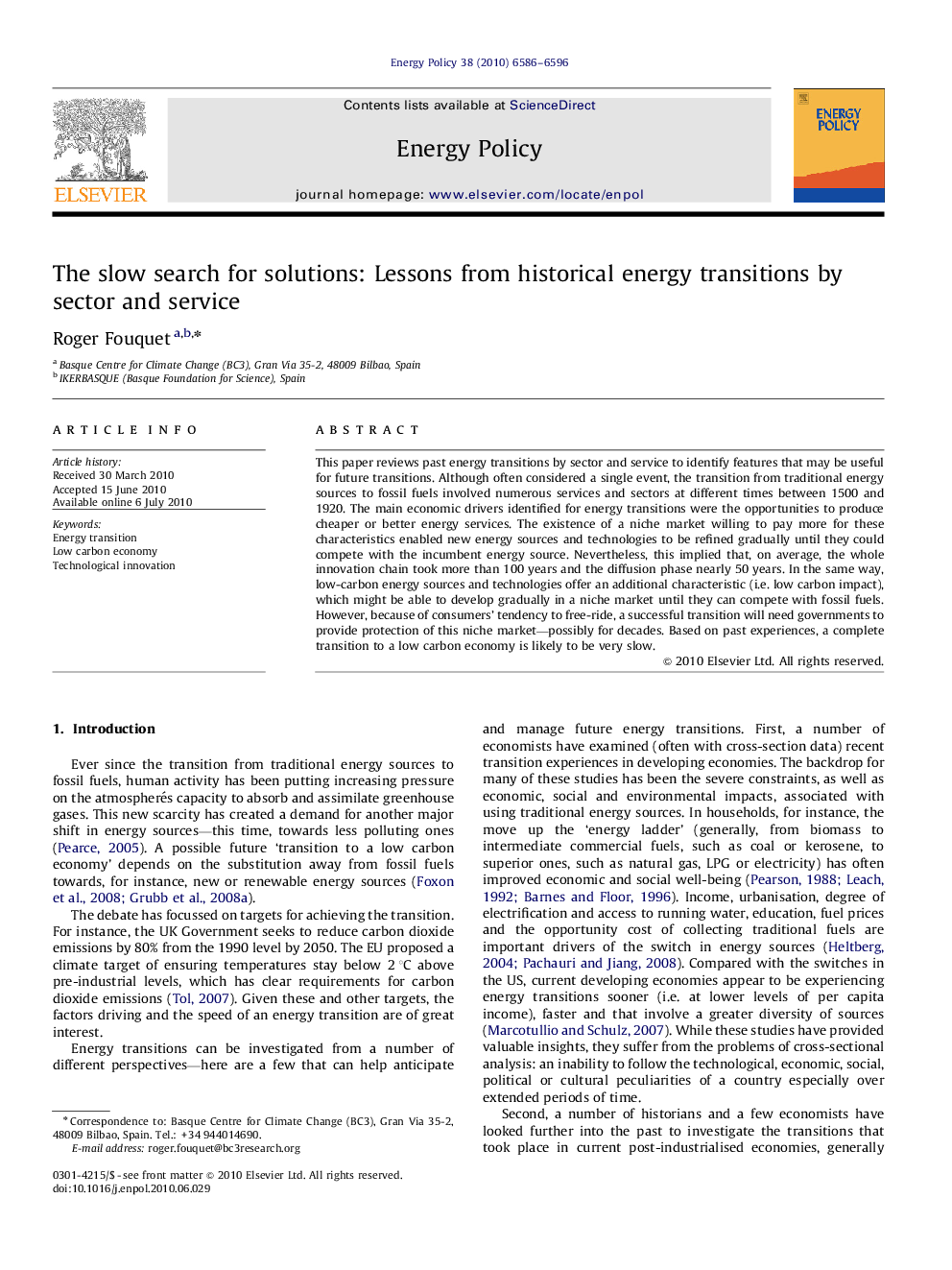| Article ID | Journal | Published Year | Pages | File Type |
|---|---|---|---|---|
| 996239 | Energy Policy | 2010 | 11 Pages |
This paper reviews past energy transitions by sector and service to identify features that may be useful for future transitions. Although often considered a single event, the transition from traditional energy sources to fossil fuels involved numerous services and sectors at different times between 1500 and 1920. The main economic drivers identified for energy transitions were the opportunities to produce cheaper or better energy services. The existence of a niche market willing to pay more for these characteristics enabled new energy sources and technologies to be refined gradually until they could compete with the incumbent energy source. Nevertheless, this implied that, on average, the whole innovation chain took more than 100 years and the diffusion phase nearly 50 years. In the same way, low-carbon energy sources and technologies offer an additional characteristic (i.e. low carbon impact), which might be able to develop gradually in a niche market until they can compete with fossil fuels. However, because of consumers’ tendency to free-ride, a successful transition will need governments to provide protection of this niche market—possibly for decades. Based on past experiences, a complete transition to a low carbon economy is likely to be very slow.
